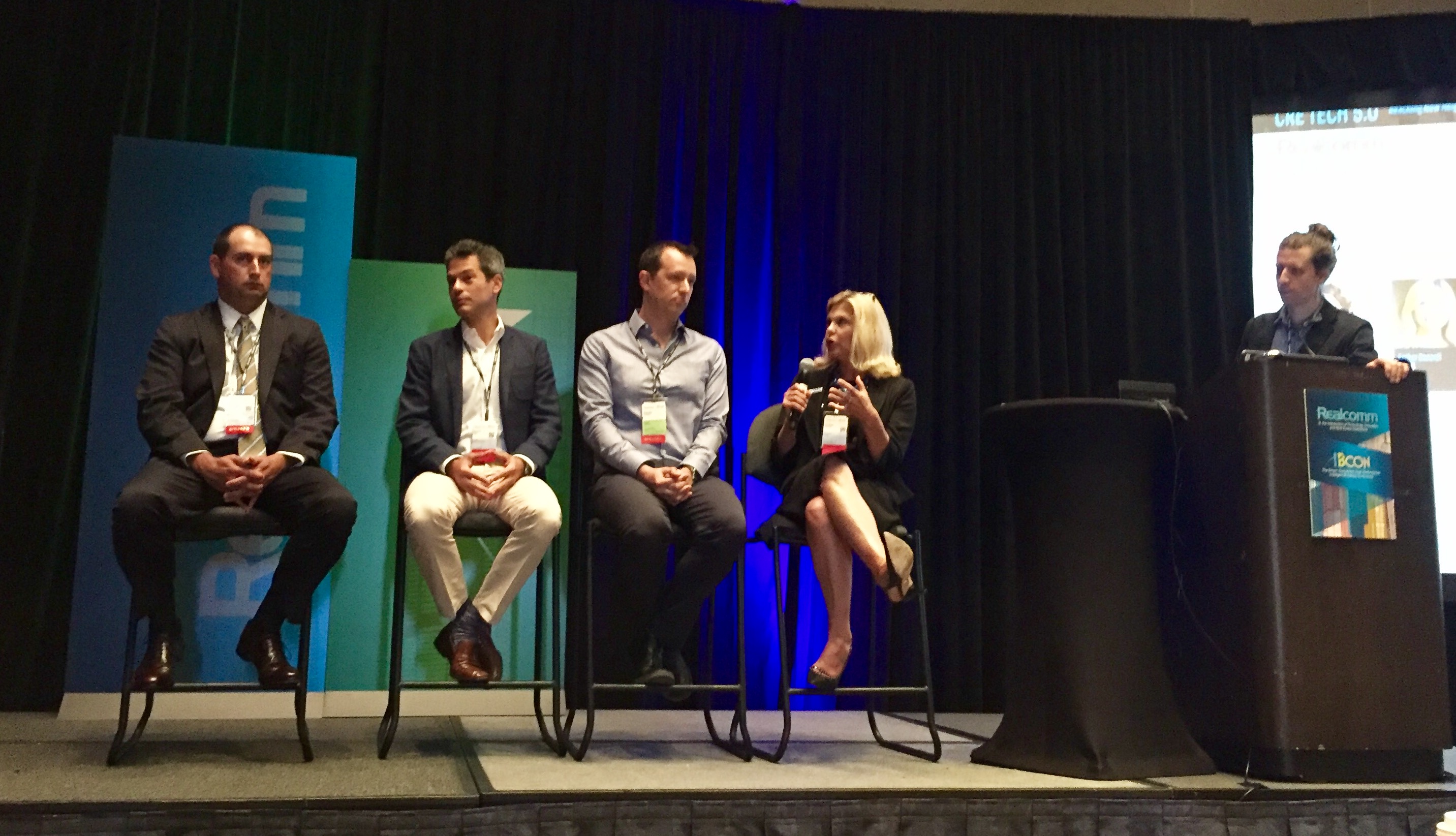Millennials in the Workplace: 9 Insights
Industry leaders at a panel during Realcomm revealed how their companies react to the deluge of Millennials in today's workforce, from changing office design trends to management strategies.
By Mallory Bulman
 There has been a lot of buzz regarding the Millennial influence when it comes to renting apartments: They’re renting in droves and some are even delaying buying a home, even if they have the means to buy. What is behind the phenomenon of the largest demographic cohort renting in such numbers? In previous generations, people would get married, settle down before the age of 30, and buy a house. Today, job growth is spurring the young generation to not only conserve the money they saw lost so easily in the housing crash of 2008, but also to allow for the opportunity to pick up and move without any housing baggage.
There has been a lot of buzz regarding the Millennial influence when it comes to renting apartments: They’re renting in droves and some are even delaying buying a home, even if they have the means to buy. What is behind the phenomenon of the largest demographic cohort renting in such numbers? In previous generations, people would get married, settle down before the age of 30, and buy a house. Today, job growth is spurring the young generation to not only conserve the money they saw lost so easily in the housing crash of 2008, but also to allow for the opportunity to pick up and move without any housing baggage.
Now, even age-old companies with proven track records are questioning their approaches to everything from office design to communication strategies as they are presented with more and more incoming Millennial employees. In a panel discussion between Yardi’s Esther Bonardi, Gensler’s Randy Howder, Boxer Properties’ Justin Segal and Cousins Properties’ Brandon Van Orden at the Realcomm conference in San Diego, the industry veterans discussed their companies’ strategies toward integrating the Millennial workforce into their office culture.
Adapt to the “New Norm”
When most company leaders think about the flexibility that Millennials are said to want, they imagine a no-boundaries, work-from-home and summer Fridays kind of workplace. While there are professionals in the Millennial generation may be attracted to perks of that caliber, the panelists said that they see all generations creating the evolution of the new workplace.
Brandon Van Orden on Millennials: “They don’t want to wait around. They like things that happen more rapidly. They like the next opportunity. That agile methodology allows you to do that, versus traditional waterfall methodology…took forever.”
Justin Segal: “What people really want today is something we’ve been offering for a long time; which is they want to learn something new, they want to get up to speed very quickly, and they want to be able to have variety and change and change jobs.”
Esther Bonardi: “If you create more of these collaborative spaces, a lot more of this development by osmosis happens…On the whole I see the Millennial workers being a very collaborative workforce…They’re willing to work together and get input from others.”
Randy Howder: “The pendulum has swung back on the idea of balance. Our research has shown while there are Millennials who are collaborative, people are different…so we’re recognizing the shortcuts of completely open floor plans.”
RH: “The workplace really is a communication tool, and it tells your employees something. So if you have private offices that are assigned by hierarchy so the more senior you are the larger your office is, and everyone else is in interior cubicles, that indicates something.”
RH: “Where we’re seeing the world going is this studio-based environment…where you recognize that people have differences…it’s about creating a team-based environment.”
New Technology Brings New Communication Styles
While work-focused instant messaging phone apps like Slack and video chat services like Skype for Business make it easy to conduct business anywhere, there are still large cohorts of the workplace that have difference preferences for communication vehicles based on when they entered the workplace. The panelists also pointed out that the way workers communicate differs based on the culture of previous workplaces and generational preferences.
RH: “How do generations and Millennials differ from other people in the same physical space? When you’re communicating, people are almost inhabiting different spheres, so the world of Slack and IM feels very different to the world of voice mail and phone calls. When they’re all happening in the same space, what are the challenges that occur there?”
EB: “Some of the areas where I see some of the biggest differences are in communication styles and in use and desire for technology…Our Boomers still like the telephone and they also still like email pretty well…Our Gen Xers send a lot of emails and they’re pretty long.”
RH: “Surprisingly, our data shows that there aren’t really fundamental differences when it comes to what people need in a physical space…Everybody needs privacy, everybody needs the ability to focus, everybody needs the ability to speak to someone in person.”







You must be logged in to post a comment.